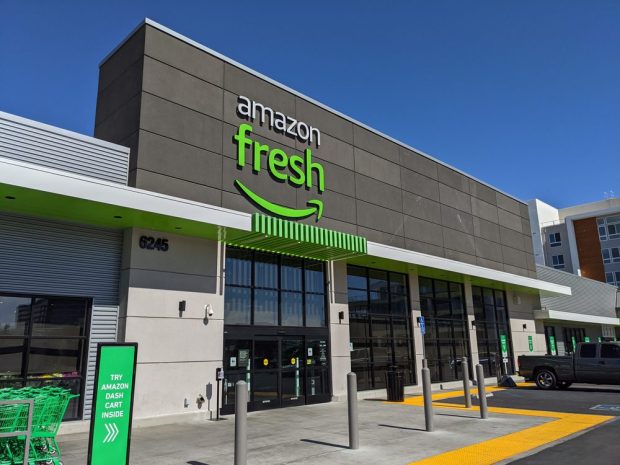Amazon Fresh Goes Stale as New Grocery Options Considered

As Amazon continues its brick-and-mortar grocery efforts, it seems likelier that Amazon Fresh is history.
On a call with analysts discussing the eCommerce giant’s first-quarter financial results Thursday (April 27), CEO Andy Jassy built upon other recent intimations that the company’s mass-market brick-and-mortar Amazon Fresh grocery brand may be soon replaced with a new concept in the same category, stating outright that the company has yet to find a model in which it has full confidence.
“If you really want to serve as much of grocery as we’d like to, you have to have a mass physical offering, and that’s what we’ve been working on for a few years with the brand we’ve called Amazon Fresh,” Jassy said. “We wish we were further along at this point. We’ve tried lots of ideas. We haven’t yet found conviction around the format that we want to go expand much more broadly.”
He added that the company has “a set of experiments and, ideas and concepts” that it is working on throughout its “dozens” of mass-market brick-and-mortar grocery stores.
This year, it has been getting clearer that the company has lost its conviction concerning the Fresh brand. There have been reports of stores intended to be Amazon Fresh locations sitting empty. One filing with the Seattle Department of Constructions and Inspections, spotted in February, suggests that the eCommerce giant may be trying out a store format under the name “Amazon Market.”
Yet the messaging has been mixed. As recently as last week, the eCommerce giant posted an article to its site touting how “simple, convenient and ultra-fast” the Amazon Fresh in-store experience is.
On the more premium side of grocery, Jassy noted that the company’s Whole Foods brand “continues to grow nicely,” with improvements in the last year in the profitability of the business.
Overall, grocery remains a priority for the eCommerce giant, especially now, with inflationary pressures causing consumers to reevaluate their purchasing decisions, shifting their spending towards necessities like food.
“In this current environment where consumers are being cautious about what they spend and finding ways to trade down in different product variations, consumables have stayed very, very strong,” Jassy said.
Certainly, to seize on this opportunity, brick-and-mortar is important, with the majority of grocery shoppers continuing to shop in stores. Findings from PYMNTS’ study “Changes in Grocery Shopping Habits and Perception,” which drew from a December survey of more than 2,400 U.S. consumers, showed that 54% of grocery customers exclusively shop in stores, and 93% of consumers purchase their groceries in brick-and-mortar stores at least some of the time.
Indeed, Jassy stated, “We have to have a bigger physical presence.”
Years into its grocery efforts, Amazon remains a long way behind competitor Walmart in terms of grocery market share. PYMNTS research found that, at the close of last year, the latter held a 17.8% share of food and beverage sales, while the former held 2.6%. Granted, however, Amazon’s share has been slowly growing over the last few years, while Walmart’s has continued to hover around 18%.

